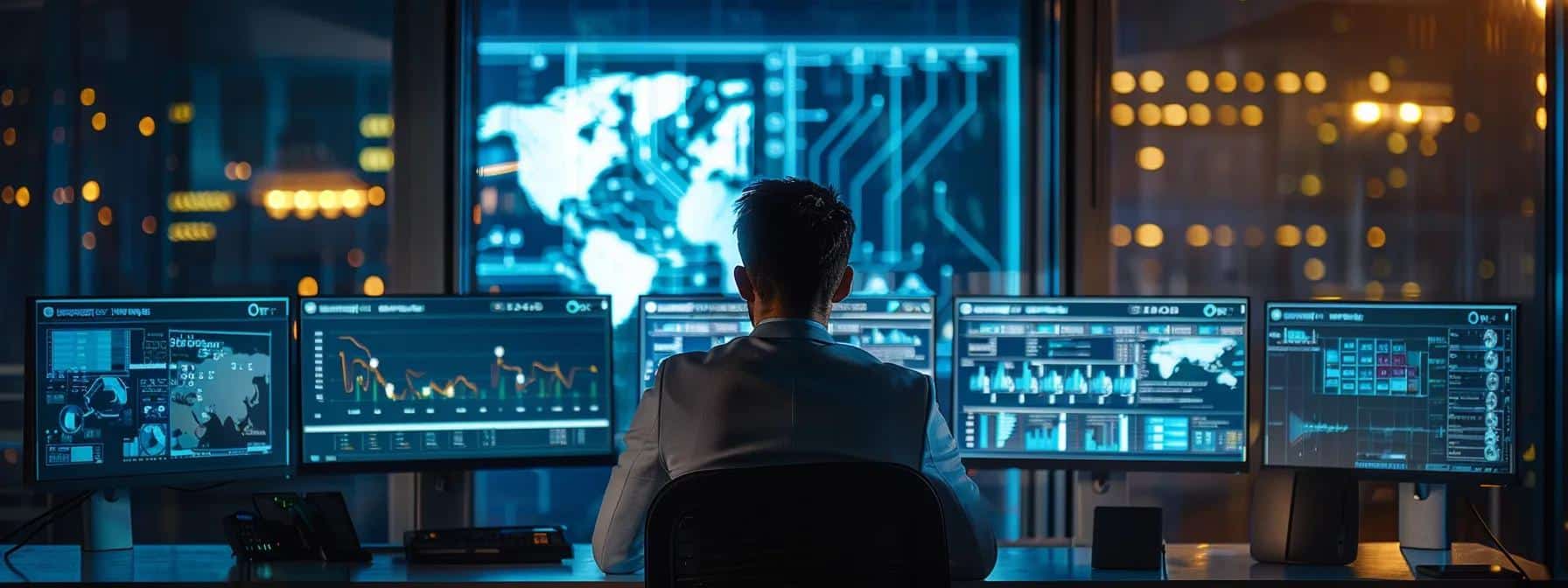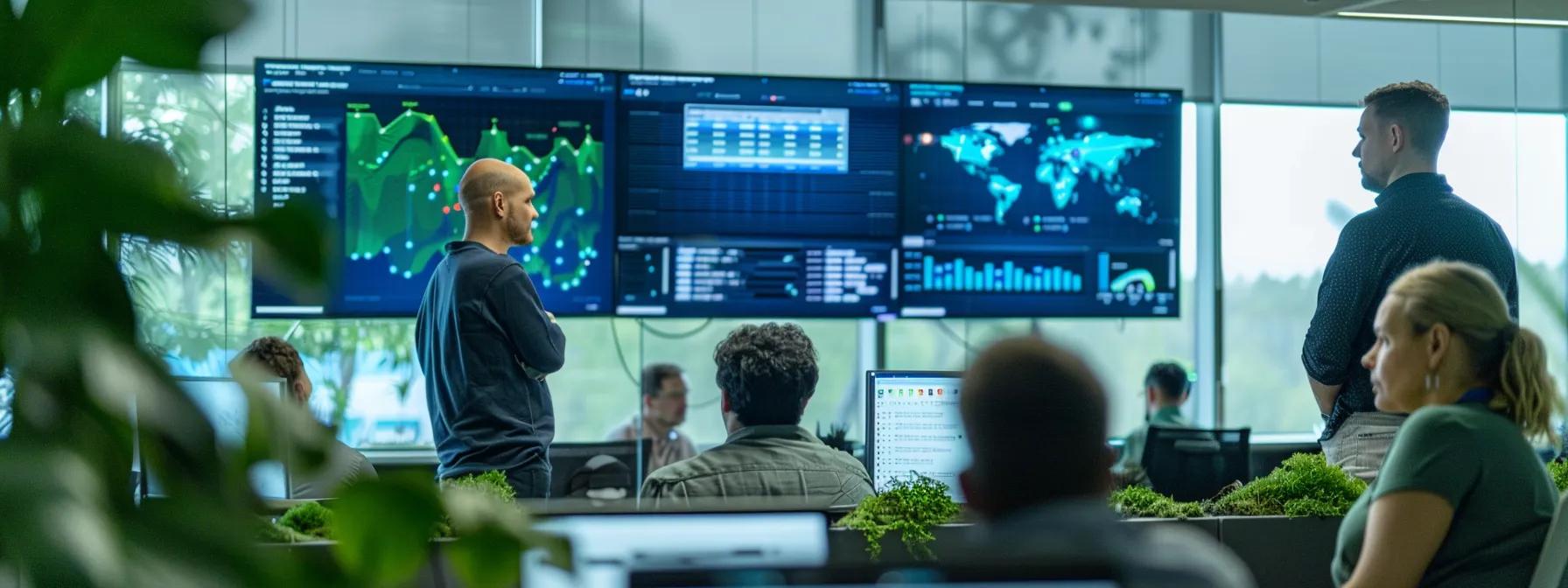Proactive Vulnerability Assessment for Threat Management

Proactive Vulnerability Assessment for Threat Management

Table Of Contents:
- What Is Proactive Vulnerability Assessment and Why Is It Essential for Businesses?
- How Do Vulnerability Scanning and Penetration Testing Work Together to Identify Risks?
- How Can Businesses Customize Vulnerability Assessments to Their Industry Needs?
- What Are the Best Practices for Reporting and Remediation After Vulnerability Assessments?
- How Does Continuous Monitoring Help Businesses Stay Ahead of Emerging Threats?
- What Are the Common Challenges Businesses Face in Proactive Vulnerability Assessment?
- How Can Businesses Choose the Right Cybersecurity Service Provider for Vulnerability Assessment?
- Frequently Asked Questions
Cyber threats continue to evolve at an unprecedented pace, challenging businesses across all sectors to stay ahead of potential vulnerabilities that can compromise valuable data, systems, and operations. In today’s digital era where remote work, cloud computing, and interconnected devices are the norm, proactive vulnerability assessments have become critical for organizations, especially when partnering with an it service provider to manage complex security needs. They provide a strategic roadmap for identifying, evaluating, and remediating weaknesses before attackers can exploit them. This article explains proactive vulnerability assessment, contrasts it with reactive security measures, and discusses its importance for securing infrastructure. It also explores integrating vulnerability scanning with penetration testing, customizing assessments for industry needs, reporting and remediation best practices, the role of continuous monitoring, common challenges, and guidelines for selecting the right cybersecurity service provider.
In today’s competitive environment where downtime and data breaches incur significant financial losses, a proactive security approach is a necessity rather than a best practice. Cybersecurity services for business now offer comprehensive solutions that not only identify security gaps but also deliver actionable remediation strategies. With increasing regulatory scrutiny and complex compliance requirements, businesses must adopt a stance that leverages both technology and expert insights to maintain a strong security posture. This article defines the core attributes of a proactive vulnerability assessment and discusses its practical applications through real-world examples and quantifiable benefits to help businesses mitigate risks effectively.
By the end, readers will understand how proactive vulnerability assessments protect digital assets while bolstering operational efficiency and resilience. This strategic guide prepares businesses to leverage cybersecurity services as a competitive advantage while ensuring continuity and compliance.
What Is Proactive Vulnerability Assessment and Why Is It Essential for Businesses?
Proactive vulnerability assessment is a strategic process that evaluates a company’s networks, systems, and applications to identify and remediate potential vulnerabilities before they can be exploited. This forward-thinking approach minimizes data breach risks, ensures regulatory compliance, and maintains uninterrupted operations. It empowers organizations by mapping potential attack surfaces and prioritizing remediation efforts.
Unlike reactive security measures that address issues after breaches occur, a proactive approach involves ongoing, iterative scanning and testing to neutralize threats before exploitation. Companies using these assessments experience reduced incident response times and lower post-incident costs. The process includes automated vulnerability scanning and targeted manual penetration testing that simulates real-world attacks. Additionally, proactive assessments streamline compliance with mandates like HIPAA, GDPR, and PCI-DSS, helping organizations avoid costly breaches while enhancing overall risk management.
How Does Proactive Vulnerability Assessment Differ From Reactive Security?
Proactive vulnerability assessment focuses on continuous monitoring and pre-emptive identification of issues, while reactive security addresses vulnerabilities only after an incident. Proactive measures include scheduled assessments, systematic scanning, and simulated attack scenarios to uncover weaknesses before they can be exploited. In contrast, reactive security often results in fragmented responses limited to post-breach patch fixes.
For example, companies investing in proactive assessments generally see up to a 40% reduction in breach incidents. Proactive techniques identify issues such as misconfigurations, outdated software, or policy failures early, whereas reactive security leaves organizations exposed to zero-day exploits and emerging threats. By integrating automated scanning with expert analysis, proactive assessments create a holistic and adaptive security posture that prepares businesses to quickly address incidents if they occur.
What Are the Key Components of a Proactive Vulnerability Assessment?
A comprehensive assessment includes several critical components: • Regular vulnerability scanning using advanced automated tools to detect known flaws. • Manual penetration testing, where experts simulate real-world attacks to uncover vulnerabilities that automated tools might miss. • Threat modeling to understand how attackers might exploit weaknesses. • Integration of risk management frameworks to prioritize remediation based on business impact. • Detailed vulnerability reporting that provides actionable insights, risk levels, remediation steps, and timelines. • Continuous monitoring to promptly detect new vulnerabilities.
Together, these components help develop a resilient security strategy that evolves with emerging threats while maintaining operational continuity and regulatory compliance.
Which Types of Vulnerabilities Should Businesses Prioritize?
Businesses should focus on vulnerabilities with the highest risk of exploitation and potential adverse impact on operations, reputation, and legal standing. High-priority issues include those that expose sensitive customer data, critical systems, and vital infrastructure components. Examples include unpatched software, misconfigurations, and insecure network settings.
Additional priorities include vulnerabilities in web applications and APIs—which are frequently targeted by automated bots—and those that enable social engineering attacks such as phishing, credential theft, and insider threats. Vulnerability assessments typically use the Common Vulnerability Scoring System (CVSS) to classify risk levels, ensuring that high-scoring issues receive immediate attention. Addressing vulnerabilities that could lead to regulatory non-compliance is also essential to avoid fines or legal repercussions.
How Do Vulnerability Scanning and Penetration Testing Work Together to Identify Risks?
Vulnerability scanning and penetration testing complement each other by providing a comprehensive view of a network’s security posture. Automated vulnerability scanning systematically examines systems and applications for known weaknesses on a regular basis, while penetration testing simulates real-world attacks to assess how deeply an attacker could compromise a system. Together, they address both the breadth and depth of security risks.
Integration of these methods allows cybersecurity professionals to verify whether detected weaknesses are truly exploitable. Automated scanners quickly identify common issues but may produce false positives or miss complex vulnerabilities; penetration testing by ethical hackers validates these findings and exposes subtler risks. Many organizations schedule automated scans weekly and perform penetration tests quarterly or after significant system updates, ensuring constant monitoring and timely remediation improvements.

What Are Automated vs Manual Vulnerability Scans?
Automated scans utilize software tools that continuously inspect systems, networks, and applications based on signature databases and predefined algorithms, offering speed and broad coverage. In contrast, manual scans are conducted by cybersecurity professionals who review system configurations, interpret scan results, and identify complex vulnerabilities that automated tools might overlook. The combination provides a balanced and in-depth discovery process, merging continuous coverage with expert analysis to fine-tune defenses against sophisticated threats.
How Does Penetration Testing Simulate Real-World Attacks?
Penetration testing is a method where cybersecurity experts simulate real-world attacks to unearth vulnerabilities in an organization’s IT infrastructure. By replicating attacker tactics, techniques, and procedures, these tests reveal potential weaknesses that might not be evident through automated scanning alone. Penetration testers use a mix of tools and manual methodologies to assess every potential entry point—networks, applications, and endpoints—thereby providing a realistic evaluation of security defenses and offering clear remediation plans to strengthen them.
When Should Businesses Schedule Regular Scans and Tests?
Vulnerability scans and penetration tests should be part of a continuous, cyclical process rather than one-time events. Automated scans are recommended on a weekly or monthly basis in accordance with the operational environment and risk exposure, while more intensive penetration tests should ideally be conducted quarterly or after major IT changes such as system overhauls or new application deployments. Regular assessments enable the prompt detection of vulnerabilities introduced by updates or evolving threats and help maintain a robust security posture that meets regulatory requirements.
How Can Businesses Customize Vulnerability Assessments to Their Industry Needs?
Customization is crucial because different industries face unique threat vectors and compliance requirements. Rather than a one-size-fits-all approach, assessments should be tailored based on factors such as regulatory obligations, data sensitivity, and the technologies used. This ensures that cybersecurity teams concentrate on the most vital assets and vulnerabilities.
For instance, the financial sector must adhere to standards like PCI-DSS and SOX, while healthcare organizations prioritize protecting patient data in compliance with HIPAA. Manufacturing companies need to secure industrial control systems, and retail organizations focus on point-of-sale systems. Expert cybersecurity teams collaborate with business leaders to develop tailored assessment frameworks that align with specific risk models, using industry-specific tools and methodologies to protect assets precisely and efficiently.
What Factors Influence the Customization of Security Assessments?
Customization is influenced by various factors: • Industry-specific threats and regulatory requirements. • The technology stack and operational environment—legacy systems may require special focus compared to modern cloud infrastructures. • Business size, geographic scope, and internal policies. • The maturity of IT infrastructure and available cybersecurity resources.
These factors enable cybersecurity providers to create risk models, prioritize vulnerabilities with high impact, and develop remediation strategies that are directly applicable to each organization’s unique challenges.
How Do Expert Teams Adapt Assessments for Different Business Environments?
Expert teams begin by conducting a comprehensive risk analysis tailored to a company’s operational environment and industry requirements. They gather details on IT architecture, security controls, and historical threat data to design a customized plan that combines automated scans with targeted manual testing. Adaptations might include adjusting the frequency, scope, and depth of assessments based on risk tolerance and regulatory needs. This collaborative process not only refines risk detection but also ensures that remediation strategies are effectively implemented and aligned with operational realities.
What Are Examples of Industry-Specific Vulnerability Risks?
Vulnerabilities differ by industry. In finance, risks include weaknesses in transaction systems, poor encryption, and insecure online banking applications. Healthcare faces issues such as patient data breaches, vulnerabilities in medical devices, and electronic health records risks. In retail, securing point-of-sale systems and e-commerce platforms is critical, while manufacturing focuses on protecting industrial control systems from cyber-physical attacks. Additionally, sectors like education and government encounter challenges with vast, diverse networks that are more prone to phishing and social engineering attacks. Understanding these risks allows businesses to tailor their cybersecurity measures effectively.
What Are the Best Practices for Reporting and Remediation After Vulnerability Assessments?
Effective reporting and remediation turn assessments into actionable security improvements. Best practices include prioritizing identified vulnerabilities by assigning risk levels based on potential impact and exploitability. Detailed reports should summarize scan results, provide risk analyses, and list specific remediation recommendations using visual aids like graphs and tables for clarity.
The remediation phase requires immediate measures to fix high-risk vulnerabilities through patching, configuration updates, and reinforcement of security protocols. Reports should offer step-by-step guidance with defined timelines and success criteria to ensure accountability. Continuous follow-up assessments and monitoring verify that fixes remain effective and vulnerabilities do not recur, creating a robust feedback loop that enhances long-term security.

How Are Vulnerability Findings Prioritized in Reports?
Vulnerability findings are prioritized by assessing severity and potential impact, often using systems such as the Common Vulnerability Scoring System (CVSS). Issues with high CVSS scores are addressed first, and reports categorize findings into tiers (critical, high, medium, low) to help businesses allocate resources efficiently. Additionally, industry-specific context is applied to prioritize risks affecting regulatory compliance and customer data, ensuring that remediation efforts are timely and well-targeted.
What Types of Remediation Guidance Do Cybersecurity Services Provide?
Cybersecurity services offer remediation guidance that covers both short-term fixes and long-term strategic improvements. This guidance includes technical instructions for patching vulnerabilities, adjusting system configurations, updating software, and implementing secure coding practices. Providers also recommend enhancements to overall security policies and procedures to prevent future vulnerabilities. Guidance is delivered via detailed reports, action plans, and sometimes hands-on support for tasks like deploying patches or reconfiguring firewalls, with a focus on monitoring post-remediation effectiveness.
How Can Continuous Monitoring Support Ongoing Vulnerability Management?
Continuous monitoring provides real-time insights into an organization’s security posture by constantly collecting and analyzing data from network traffic, system logs, and user activities. This ongoing process ensures that emerging vulnerabilities or anomalous behaviors are rapidly detected, triggering automated alerts and immediate responses. By integrating with incident response plans, continuous monitoring helps maintain an up-to-date view of cybersecurity risks and facilitates quick remediation, creating a feedback loop that validates the effectiveness of security measures over time.
What Are the Benefits of Proactive vs Periodic Vulnerability Assessments?
Proactive vulnerability assessments offer distinct advantages over periodic evaluations by continuously monitoring IT environments to detect issues as soon as they arise. This real-time capability allows companies to promptly address vulnerabilities, reducing the window of opportunity for attackers. Proactive assessments also integrate with continuous monitoring systems to create a dynamic, adaptive security posture that improves risk management through constant feedback and quicker decision-making. In contrast, periodic assessments may leave gaps that can be exploited between evaluations.
How Does Continuous Monitoring Help Businesses Stay Ahead of Emerging Threats?
Continuous monitoring plays a crucial role by providing ongoing, real-time visibility into the security environment. Constant tracking of network activities, system performance, and user behavior enables early detection of anomalies and potential breaches. Advanced technologies such as machine learning and behavioral analytics support the prediction and identification of previously unknown threats. This proactive method reduces risks associated with zero-day vulnerabilities and streamlines incident response, ensuring that security teams can address issues before they escalate into major incidents.
What Technologies Enable Effective Continuous Vulnerability Monitoring?
Effective monitoring relies on a mix of advanced technologies including automated vulnerability scanners, Security Information and Event Management (SIEM) systems, and Endpoint Detection and Response (EDR) tools. SIEM solutions aggregate and analyze log data from multiple sources for real-time threat detection, while EDR tools monitor endpoints for suspicious behavior. These systems, often enhanced by machine learning and artificial intelligence, improve detection accuracy and reduce false positives. Cloud-based monitoring further enables comprehensive, scalable coverage across distributed environments.
How Does Continuous Monitoring Integrate With Incident Response?
Continuous monitoring creates a direct feedback loop with incident response plans. When a threat or breach is detected, automated alerts prompt immediate evaluation and response by the incident response team. Predefined trigger protocols—such as isolating affected network segments or deploying patches—ensure that remediation actions are initiated quickly, reducing downtime and financial loss. By correlating vulnerability data with incident intelligence, continuous monitoring bolsters a robust, responsive security ecosystem that adapts to evolving threats.
What Are the Benefits of Proactive vs Periodic Vulnerability Assessments?
(Repeated section: Proactive assessments continuously manage risk in real time, offering advantages over periodic assessments by eliminating protection gaps and ensuring ongoing, adaptive security.)
What Are the Common Challenges Businesses Face in Proactive Vulnerability Assessment?
Implementing proactive vulnerability assessments can be challenging due to limited resources, complex IT environments, and rapidly evolving cyber threats. Many small and mid-sized companies lack the in-house expertise necessary for continuous security evaluations and must rely on third-party services. The complexity of modern architectures—including cloud infrastructures, IoT devices, and remote work setups—creates an ever-changing attack surface that is difficult to manage. Budget constraints and the need for ongoing investment in advanced tools and training further complicate these efforts. Incomplete or infrequent assessments may leave organizations exposed to new, unanticipated attack methods, and integrating rapid remediation with business operations can disrupt normal workflows. Despite these challenges, continuous vigilance and rapid remediation are essential to prevent severe cyber incidents.

How Can Limited Resources Affect Vulnerability Management?
Limited resources—in terms of budget and skilled personnel—can impede effective vulnerability management. Organizations with constrained resources might perform assessments less frequently or rely solely on automated tools, which can create detection gaps and delay remediation efforts. This lack of resources increases the risk that vulnerabilities will persist long enough to be exploited by attackers.
What Are the Risks of Incomplete or Infrequent Assessments?
Incomplete or infrequent assessments can leave businesses exposed by allowing new vulnerabilities to go undetected. This can result in security gaps that attackers may exploit, leading to data breaches, system downtime, financial losses, and reputational damage. Additionally, inconsistent assessments may hinder regulatory compliance, potentially resulting in fines and legal consequences.
How Do Cybersecurity Services Overcome These Challenges?
Cybersecurity service providers address these challenges by leveraging advanced technologies, experienced personnel, and scalable managed solutions. They deploy comprehensive automated scanning along with manual testing by ethical hackers to ensure thorough assessments, while continuous monitoring minimizes detection gaps. Their managed service models allow businesses to concentrate on core operations while experts manage vulnerability detection, remediation, and compliance with robust reporting frameworks.
How Can Businesses Choose the Right Cybersecurity Service Provider for Vulnerability Assessment?
Selecting the right provider is critical to a robust proactive vulnerability assessment program. Businesses should consider the provider’s credentials, industry experience, comprehensiveness of service offerings, and ability to customize solutions to meet specific needs. A provider with a deep understanding of global cyber threats and industry-specific risks is essential for maintaining a strong security posture.
A reputable provider will offer transparency in its assessment approach, including detailed reports, clear remediation guidance, and continuous monitoring services. Recognized certifications such as CISSP, CEH, and others demonstrate technical expertise and adherence to industry best practices. A proven track record in similar business environments further assures that the provider’s solutions are both technically sound and tailored to specific challenges.
What Credentials and Certifications Should You Look For?
When evaluating providers, look for industry-recognized credentials and certifications that demonstrate technical proficiency and adherence to best practices. Certifications such as CISSP, CEH, OSCP, and CompTIA Security+ indicate expertise in cybersecurity. Additional certifications in vulnerability management and penetration testing add further validation. These credentials build trust and indicate that the provider has access to the latest threat intelligence and advanced methodologies to manage diverse vulnerabilities effectively.
How Important Is Customization and Industry Experience?
Customization and industry experience are critical because they ensure that assessment and remediation strategies are tailored to the organization’s specific risks and operational environment. A provider with extensive experience in sectors such as finance, healthcare, manufacturing, or retail can offer bespoke solutions that directly address industry-specific threats. Customization ensures assessments align with the organization’s IT environment, regulatory requirements, and operational priorities, ultimately reducing risk and strengthening security posture.
What Questions Should Businesses Ask Before Hiring a Provider?
Before hiring a provider, businesses should inquire about: • The provider’s methodology for conducting vulnerability assessments. • The frequency and scope of both automated scans and manual penetration tests. • How remediation efforts are prioritized. • Experience with similar business environments, supported by case studies or success stories. • The integration of continuous monitoring and incident response plans. • Pricing models, service-level agreements (SLAs), and compliance measures.
These questions help ensure that the provider is reliable, technically adept, and capable of delivering customized security solutions.
Frequently Asked Questions
Q: What distinguishes proactive vulnerability assessment from traditional security measures? A: Proactive vulnerability assessment continuously identifies and mitigates potential vulnerabilities before exploitation, combining automated scanners with manual testing to pinpoint weaknesses early. This approach improves risk management and compliance by providing an updated view of the organization’s threat landscape.
Q: Why is continuous monitoring essential in vulnerability management? A: Continuous monitoring provides real-time insights into evolving threats, enabling immediate detection of anomalies and prompt remediation actions. It reduces the window of opportunity for attackers, supports regulatory compliance, and enhances overall security resilience through seamless integration with incident response protocols.
Q: How often should businesses perform vulnerability scanning and penetration testing? A: Vulnerability scanning is typically conducted weekly or monthly, while comprehensive penetration testing is recommended quarterly or after significant IT changes. Regular assessments ensure that new vulnerabilities are promptly identified and remediated, minimizing exploit risks between evaluations.
Q: What role does industry-specific customization play in proactive vulnerability assessments? A: Tailoring assessments to industry-specific threats—such as HIPAA in healthcare or PCI-DSS in finance—ensures that the most critical vulnerabilities are identified and addressed. Customization helps organizations efficiently allocate resources and implement remediation strategies that target their unique operational challenges.
Q: What should businesses inquire about when selecting a cybersecurity service provider for vulnerability assessment? A: Businesses should ask about the provider’s credentials (e.g., CISSP, CEH), experience with similar industries, assessment methodologies (automated and manual), continuous monitoring capabilities, remediation prioritization, pricing models, and SLAs to ensure effective, compliant cybersecurity solutions.
Q: How can businesses ensure the effectiveness of remediation after vulnerability assessments? A: Remediation effectiveness can be ensured by implementing a prioritized action plan based on risk levels, following expert guidance, and scheduling follow-up assessments to confirm vulnerabilities are fully addressed. Continuous monitoring and integrated incident response plans further support timely and effective remediation.
Q: What are the key benefits of integrating vulnerability scanning with penetration testing? A: Integrating these methods provides a comprehensive approach by combining broad, continuous detection of known vulnerabilities with in-depth, simulated real-world attacks that uncover complex vulnerabilities. This dual strategy offers deeper insights, reduces false positives, and supports a robust risk management framework.

